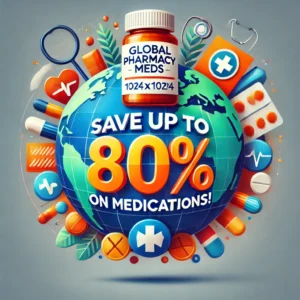Top 5 Ways to Save Money on Cancer Medications
Cancer treatment can be overwhelming, not only physically and emotionally but also financially. The cost of cancer medications can be a significant burden for many patients, but there are ways to reduce the expense without compromising on the quality of care. Here are the top five strategies to help you save money on cancer medications.
1. Explore Generic and Biosimilar Options
Many cancer drugs have generic versions or biosimilars (similar to brand-name biologic drugs but usually less expensive). Generic and biosimilar drugs are just as effective as their brand-name counterparts and undergo rigorous testing to ensure safety and efficacy. Always ask your oncologist or pharmacist if there are any lower-cost alternatives available for your prescribed medication.
- Tip: Sometimes a drug may be available in different forms or dosages at varying prices. Check with your healthcare provider to see if switching can lower costs.
2. Leverage Prescription Discount Programs
Several organizations, pharmacies, and online platforms offer prescription discount cards or coupons that can help lower the cost of cancer medications. These programs are often free to sign up for and can be used in combination with or instead of insurance coverage, depending on the terms of your health plan.
- Popular Resources:
- GoodRx
- NeedyMeds
- RxAssist
These services compare prices across pharmacies and provide discounts on prescription medications, including many cancer drugs. They can often offer significant savings, especially for patients paying out of pocket.
3. Apply for Patient Assistance Programs (PAPs)
Many pharmaceutical companies offer Patient Assistance Programs (PAPs) to help cancer patients afford their medications. These programs are typically available for patients who meet certain income or insurance criteria. If you’re struggling to afford your medications, it’s worth checking whether the drug manufacturer offers any assistance or discount programs.
- How to Find PAPs:
- Visit the drug manufacturer’s website.
- Ask your oncologist or pharmacist to provide information on available programs.
- Search for non-profit organizations that partner with pharmaceutical companies to offer these programs.
4. Shop Around for Online Pharmacies
Buying medications online can be a cost-effective option, but it’s crucial to ensure you’re purchasing from a legitimate and accredited pharmacy. Look for pharmacies verified by organizations like the National Association of Boards of Pharmacy (NABP) or with VIPPS certification (Verified Internet Pharmacy Practice Sites). Many online pharmacies offer cancer drugs at discounted rates, and some even provide free shipping and auto-refill discounts.
- Key Tips:
- Always check reviews and ratings of the online pharmacy before placing an order.
- Ensure that the pharmacy requires a valid prescription before purchasing any medication.
- Compare prices across multiple online pharmacies for the best deal.
5. Seek Financial Support from Non-Profit Organizations
Several non-profit organizations provide financial support specifically for cancer patients who cannot afford their treatment. These organizations may cover a portion of the cost of medications, copays, or even transportation to treatment centers. Some well-known organizations include:
- The HealthWell Foundation
- CancerCare
- The Leukemia & Lymphoma Society
These organizations have funds specifically set aside to help patients with out-of-pocket medication expenses. They often provide grants or financial aid directly to patients to ensure they can continue their prescribed treatment plan.
Conclusion
Cancer medications are an essential part of treatment, but their costs can be daunting. By exploring generic and biosimilar drugs, using prescription discount programs, applying for patient assistance, shopping through legitimate online pharmacies, and seeking help from non-profits, you can significantly reduce your medication expenses. Always communicate openly with your healthcare provider about cost concerns so that they can help guide you to the most affordable and effective treatment options.



